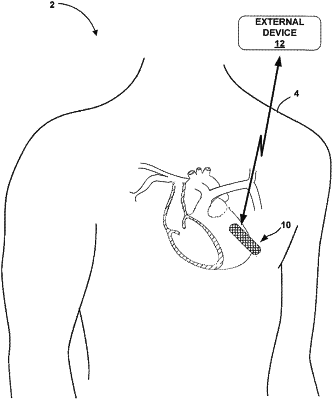| CPC A61B 5/7221 (2013.01) [A61B 5/287 (2021.01); A61B 5/364 (2021.01)] | 21 Claims |

|
1. A medical device comprising:
a plurality of electrodes configured to sense a cardiac electrogram of a patient; and
processing circuitry configured to:
determine that an asystole detection criterion is satisfied based on not identifying a cardiac depolarization in the cardiac electrogram during a time interval;
based on the determination that the asystole detection is satisfied, determine whether one or more false asystole detection criteria are satisfied based on the cardiac electrogram signal; and
withhold an indication of an asystole episode for the patient based on a determination that at least one of the one or more false asystole detection criteria is satisfied,
wherein the one or more false asystole detection criteria comprises a reduced amplitude threshold criterion for detecting cardiac depolarizations in the cardiac electrogram,
wherein, to determine that the reduced amplitude threshold criterion is satisfied, the processing circuitry is configured to:
identify a plurality of cardiac depolarizations occurring in the cardiac electrogram preceding the time interval;
determine an amplitude for each cardiac depolarization of the plurality of identified cardiac depolarizations; and
determine a reduced amplitude threshold based on the determined amplitudes of the plurality of identified cardiac depolarizations.
|